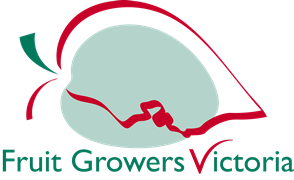“So when the trees are planted and mudded in, that makes maximum root contact with the soil,” Sackett said. “And for those that don’t have irrigation, there’s a sprayer available like we had when I was a kid, and you just go tree by tree and mud them in.”
After the orchard is planted, if you want to go the fertigation route — as growers with new drip irrigation systems often do — it’s important to work with experienced suppliers to set up the equipment, said Griffith. To be safe, you want a system with check valves and a switch to ensure that if your irrigation pump shuts down, the fertilizer injection shuts off as well, he said.
“Big problems can happen because fertilizer is heavier than water. The next day, because fertilizer is heavier than water, at the lowest point in the mainline you’ll be shooting pure fertilizer and killing trees, which I have done,” he said.
Griffith described some common fertigation rates for new apple trees, adding that in Eastern Washington, cherries and pears burn more easily than apples.
To push growth on nonbearing apple trees, it’s common to apply between 10 to 20 pounds of nitrogen per acre per week, distributed through a three- or four-hour injection time, he said. Running longer can waste fertilizer by watering it too deep into the soil, but running for a shorter window can lead to uneven distribution of the nutrients across the orchard.
“You’ve got to learn for yourself not to irrigate too far below the root zone, whether it’s with a screw auger or some electronic monitoring, otherwise you are wasting your fertilizer,” Griffith said.
He recommends minimizing the risk of mistakes in the field by mixing a “batch tank” of fertilizer — 10 pounds per acre for 10 acres for example — to keep the process consistent.
Once the system is set up, the amount and type of fertilizers applied should be based on regular soil samples. Sackett said he tests the soil weekly when he is running high rates of fertilizer.
If your soils are getting salty, you should switch to the more expensive, low-salt nitrogen sources, he said. Sackett also recommends testing leaf tissue samples to check that the trees are getting the right amount of nutrients from the soil.
But there are also downsides to driving aggressive growth with high levels of fertilizer, including propensity toward winter injury, blind wood and poor fruit quality in some varieties if they are cropped early, according to Sackett and Griffith.
“I have had no luck trying to crop Honeycrisp while trying to grow the tree to fill the space,” Sackett said. “It makes for a large, inedible apple with bitter pit.”
Trees pushed with high levels of nitrogen are also more prone to crown rot, and growers without irrigation need to beware that water stress can cause the trees to burn if the soil is high in salts. Pushing for aggressive growth can also lead to micronutrient deficiencies, such as zinc.
“When we push these baby trees really hard, we cut them off on August 1. Realistically, they are going to be prone to winter injury,” Griffith said.
To harden off the trees to prevent winter injury, they recommend deficit irrigation in the fall. •
– by Kate Prengaman

